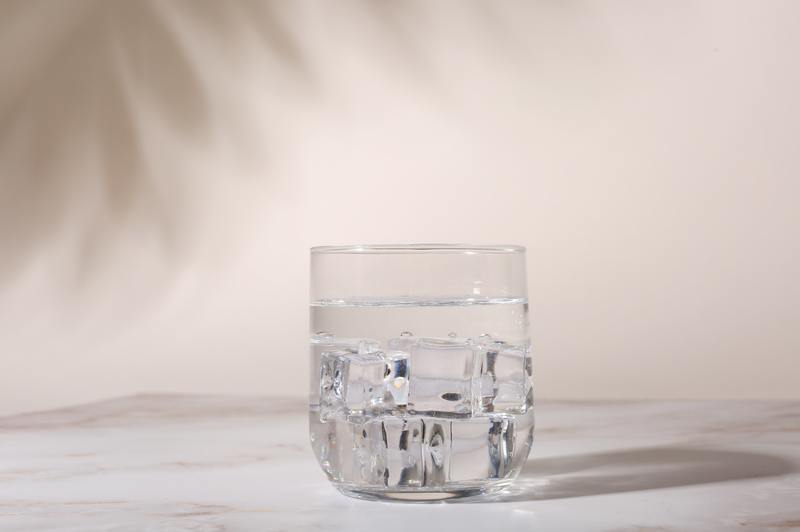Why does my water smell like mildew? Were you aware that your water can grow mildew?
You might want to check thoroughly to assess if it’s the water contaminated with mildew or the water source or container. Continue reading so that you’ll know what to do in case that this happens or is currently happening to you.

Can Mildew Grow in Water?
Have you ever wondered if mildew can grow in your water? If you want to know about this, then continue reading, but first, let’s define mildew.
The United States Environmental Protection Agency claims that mildew is a certain kind of mold or fungus with a flat growth habit. Due to its flat growth, it only touches the surface of a material, which means that it only damages the surfaces of the items it grows on.
Mildew can appear white or gray and powdery or fuzzy. It smells musty and earthy and sometimes like rotting wood or soiled wet socks.
Now, back to the question. Can mildew grow in water?
Yes, it can, like how mold does. Mildew can grow in water as long as it is filled with nutrients that benefit it.
It’s more likely to thrive in stagnant water for a long time or if it is in a dark environment. It can grow in various places with water or those that are your source of water supply.
WIth your water sources contaminated with mildew, the water could smell unpleasant. If your water itself has grown mildew, then there’s more likely an unpleasant smell to be present.
In case you drank water contaminated with mildew, it should be fine if it’s just a few sips since your stomach acid can kill those pathogens. However, you should still see a doctor just to be sure.
For further information, see this article about how long does it take for water to mold.
What to do with water that has mildew?
It’s either your water was contaminated by mildew, or it’s the container that contains water that has it. Here are some ways to remove mildew from different water sources:
1. Water
If the water itself has mildew growth or the smell is unpleasant, the best thing to do is throw it away. Thoroughly clean the container where that water with mildew was placed because it can also be the source of the mildew to continue spreading.
2. Water bottles
If you regularly use water bottles, how often do you clean them? Most wouldn’t do this regularly, but it should be.
Delish recommended washing water bottles every day and sanitizing them once a week to kill pathogens that probably have grown on them.
To wash the bottle, you can use plain dish soap and hot water. Start by filling it with hot water and dish soap, let it sit for a few minutes before scrubbing and cleaning it thoroughly inside out.
Finally, rinse it with hot water. You can keep freshly washed bottles in the fridge to prevent the growth of bacterias.
See also this article about why does my water bottle smell like mildew.
3. Water heater
First, drain the water from the water heater until it’s empty. Then, refill it again.
This is for a mild mildew issue, but if the situation is more serious, it is advisable to call a professional’s help.
4. Water pipes
It’s harder to clean water pipes because it’s challenging to reach.
Start with pouring ½ cup of household bleach into the drain, let it sit for a while. Then, pour hot water down, run hot water from the tap to the drain for a few minutes.
Place ¼ cup of baking soda into the drain and flush it with a cup of white vinegar. Let it sit for a few minutes again.
Run hot water for several minutes to wash the drain. Repeat this until there’s no more mildew smell appearing.
Mildew Prevention
It’s always better to prevent a situation where mildew infesters your water. Not only does it bring some unpleasant smell, but it’s also not advisable to drink it.
Knowing how to prevent it can be conducive; see the following tips you can easily follow for this:
- Install a water purification system. It could help improve the taste and smell of your drinking water and remove harmful organic and inorganic substances.
- Inspect your home monthly. More so for places or materials that contain water or were exposed to water, so you immediately prevent mildew or mold growth.
- Regularly clean water bottles, and sanitize them at least once a week. Don’t skip on this if you want clean drinking bottles and water to bring outside.
- If you’re not using the water bottles or containers, wash and dry them before storing them properly. Make sure your storage is well ventilated, dry, and has good lighting so that mildew growth can be prevented.
Conclusion
This article is made to answer the question, “why does my water smell like mildew.” To know the answer, you have to be observant and identify if the water itself is contaminated or if it’s the container where you store mildew so that you can proceed to the cleaning.
Cleaning mildew from water can be a daunting task if you’ve just encountered it, but with the help of this article, you could do it with ease and guidance.
Although some claimed that mildew-contaminated water wouldn’t pose a significant threat to one’s health, it’s still best to be cautious. So, upon sighting or smelling one, immediately take action.
